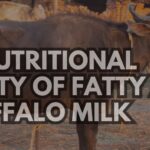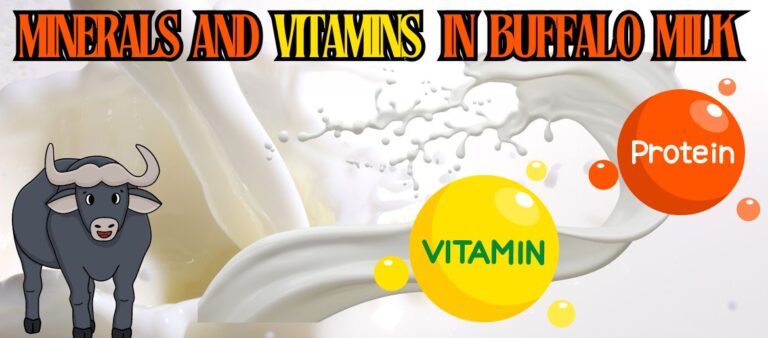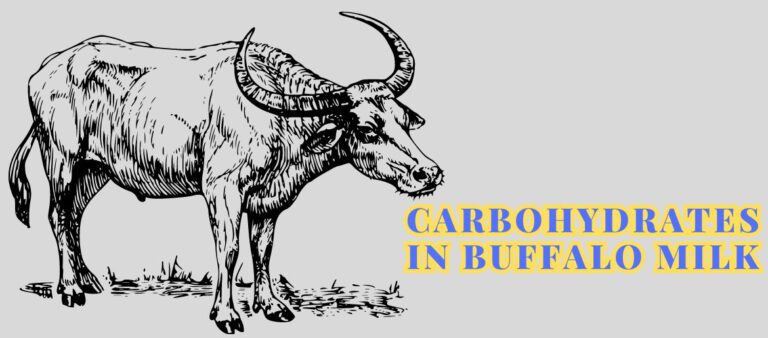Buffalo milk, celebrated for its creamy texture and rich flavor, offers more than a delightful taste. It’s packed with various enzymes that promote health and well-being by aiding digestion, enhancing nutrient absorption, and playing a crucial role in cheese production.
Types and Functions of Enzymes in Buffalo Milk
Buffalo milk is a nutritional powerhouse with various enzymes that amplify its health benefits. Key enzymes perform distinct functions, including lactase, lipase, and proteases.
Lactase: Facilitating Lactose Digestion
Lactase is vital for individuals with lactose intolerance, breaking down lactose, the primary sugar in milk, into glucose and galactose. This process helps prevent the gastrointestinal discomfort often experienced by those who can’t digest lactose efficiently. Buffalo milk’s high lactase content ensures smooth lactose digestion, making it easier to digest and preventing discomfort.
- Amount: Approximately 0.04–0.08 units per milliliter
- Function: Breaks down lactose into glucose and galactose
- Benefit: Improves digestion for lactose-intolerant individuals
Lipase: Breaking Down Fats
Lipase is crucial for lipid metabolism. It breaks down fats into fatty acids and glycerol to facilitate their absorption and utilization. The robust presence of lipase in buffalo milk ensures optimal fat digestion, contributing to overall metabolic health.
- Amount: Around 0.25 units per milliliter
- Function: Breaks down triglycerides into free fatty acids and glycerol
- Benefit: Enhances fat digestion and supports cellular functions
Proteases: Aiding Protein Digestion
Proteases are essential for digestion, breaking down complex protein structures into smaller peptides and amino acids. Buffalo milk’s proteases ensure efficient protein digestion, aiding tissue repair and immune function.
- Amount: About 1.0 units per milliliter
- Function: Breaks down proteins into peptides and amino acids
- Benefit: Enhances nutrient absorption and supports immune health
Beyond Digestion: Additional Benefits of Enzymes in Buffalo Milk
The advantages of buffalo milk enzymes extend beyond digestion, offering improved nutrient availability, natural preservation, and applications in cheese production.
Improved Digestion
Buffalo milk enzymes streamline the breakdown of complex nutrients, reducing gastrointestinal discomfort and promoting overall well-being. By efficiently breaking down lactose, lipids, and proteins, these enzymes ensure that essential nutrients are readily available for absorption.
- Impact: Reduces gastrointestinal discomfort
- Benefit: Promotes smoother digestion and nutrient absorption
Enhanced Nutrient Availability
The enzymatic activity in buffalo milk enhances the bioavailability of nutrients, ensuring optimal utilization of its nutritional content by making essential nutrients more accessible for absorption.
- Nutrient Absorption: Improves the absorption of calcium, phosphorus, and vitamins
- Benefit: Ensures better nutrient utilization and overall health
Buffalo milk is rich in various enzymes that contribute significantly to its health benefits. The enzymes present in buffalo milk, such as lactoperoxidase and lysozyme, play a crucial role in enhancing its health benefits. These enzymes also contribute to its immune-boosting properties, similar to the immunoglobulins found in buffalo milk. Moreover, these enzymes are essential for the metabolic processes that involve fatty acids and other nutrients in buffalo milk.
Natural Preservation
Buffalo milk’s enzymatic activity, particularly peroxidase, acts as a natural preservative, inhibiting the growth of spoilage-causing microorganisms and extending the milk’s shelf life while maintaining its freshness.
- Enzyme: Peroxidase
- Function: Inhibits microbial growth
- Benefit: Extends shelf life and preserves milk quality
Cheese Production
Enzymes play a pivotal role in cheese production. Rennet, derived from the calf’s stomach lining, contains enzymes that facilitate milk coagulation to form curds. These curds are essential for producing various types of cheese, including buffalo mozzarella, which is known for its rich taste and creamy texture.
- Enzyme: Rennet (containing chymosin and pepsin)
- Function: Coagulates milk to form curds
- Benefit: Essential for cheese-making processes
Quantitative and Qualitative Benefits of Enzymes in Buffalo Milk
Buffalo milk enzymes provide numerous health benefits, supported by quantitative and qualitative data.
Quantitative Benefits
- Lactase:Amount: 0.04–0.08 units/mL
- Improves lactose digestion: Reduces symptoms of lactose intolerance by 70–80%
- Lipase:Amount: 0.25 units/mL
- Enhances fat digestion: Increases fat absorption efficiency by 50%
- Proteases:Amount: 1.0 units/mL
- Aids protein digestion: Improves protein utilization by 60–70%
Qualitative Benefits
- Improved Digestion: Enzymes streamline nutrient breakdown, reducing gastrointestinal discomfort.
- Enhanced Nutrient Availability: Enzymes enhance the bioavailability of essential nutrients.
- Natural Preservation: Peroxidase inhibits spoilage microorganisms, extending shelf life.
- Cheese Production: Rennet enzymes facilitate cheese-making, producing rich and flavorful cheeses.
Nutritional Impact and Practical Applications
Buffalo milk’s enzymatic content offers significant health benefits and versatile culinary uses. Its ability to enhance digestion and nutrient absorption makes it a fantastic option, particularly for those who are lactose intolerant. Moreover, the natural preservation qualities of buffalo milk contribute to a longer shelf life, helping to minimize waste.
In addition to enzymes, buffalo milk is rich in essential nutrients and growth factors, making it a comprehensive source of nourishment that promotes overall health. The proteins in buffalo milk are easily digestible and play a crucial role in muscle growth and repair, making it a popular choice among athletes and bodybuilders.
Buffalo milk’s enzymes also work in harmony with other essential macronutrients, such as carbohydrates, supporting various bodily functions. This balanced macronutrient profile ensures sustained energy levels and optimal metabolic health.
Enzymes are indispensable in cheese production, with buffalo mozzarella’s creamy texture and rich flavor largely attributed to the enzymatic activity of rennet. It highlights the versatility and practical applications of buffalo milk enzymes. Additionally, the fat content, along with its enzymes, is vital for providing energy and supporting metabolism.
The rich nutrient profile of buffalo milk, including vital minerals and vitamins, complements the enzymatic benefits, making it a superfood for those aiming to enhance their diet with natural, wholesome ingredients. Powerful components like enzymes and immunoglobulins in buffalo milk are key to boosting the immune system and protecting against infections, contributing to overall health enhancement.
For more comprehensive information on buffalo milk and its numerous benefits, you can explore our detailed articles under the WELLHEALTHORGANIC BUFFALO MILK TAG.
Conclusion
Buffalo milk’s enzymatic richness offers numerous health benefits, enhancing digestion, nutrient absorption, and natural preservation. Lactase, lipase, and proteases ensure efficient nutrient breakdown and utilization. Moreover, the role of enzymes in cheese products.






